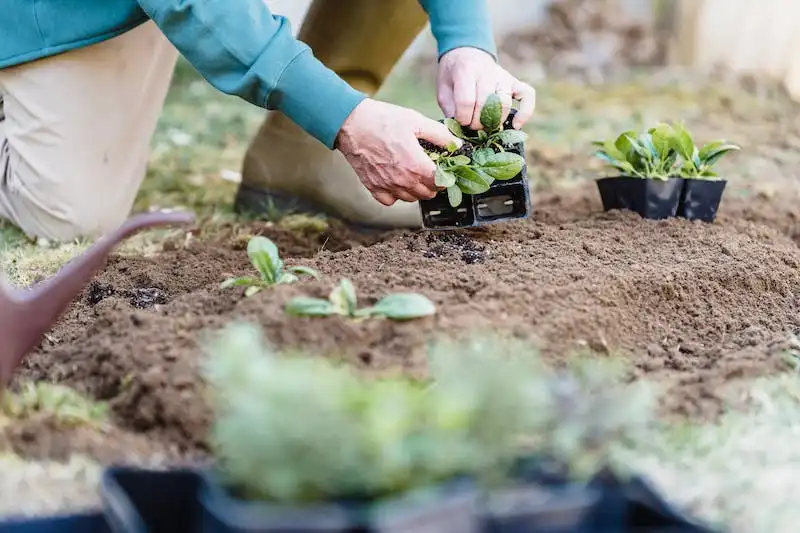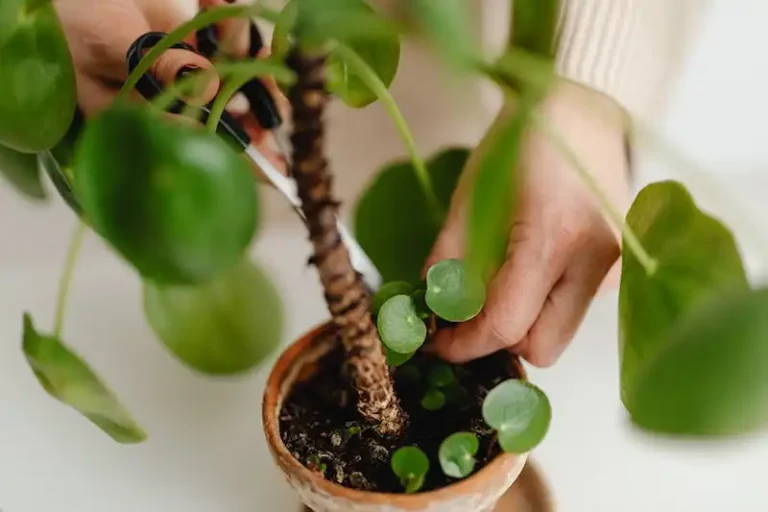Water is essential for the survival of plants. Understanding how plants use water can help gardeners provide the right amount and type of water to keep their plants healthy.
Plants absorb water through their roots, which act like jet-type probes that mix with the soil surrounding them. The roots of trees, for example, tell the rest of the plant when and how much water it needs. This is why watering from the bottom, although a thought, isn’t always the best method. Different species of plants have different needs, and the soil’s drainage plays a key role in determining how often and how much water to give.
In gardening articles, you may often read about the spray technique for watering plants, especially during the winter. This technique provides enough water to reach the roots, while avoiding excess water that can lead to root rot. Some plants, however, prefer to have their leaves wet, which encourages them to grow.
When it comes to potted plants, it’s important to choose a pot with good drainage. After watering, make sure to drain any excess water. Young plants should be watered more frequently than mature ones. As a general rule, plants require about 1 inch of water per week.
For a healthy garden, it’s crucial to understand the water needs of different plants and choose the watering techniques accordingly. By providing the right amount of water, plants can grow longer and better, ensuring a lush greenery in your garden.
Stay updated with related articles and tips on the proper water use for plants by regularly checking gardening archives. And even consider poking around for special techniques that can help you achieve the best results in watering your plants throughout the year.
How to Water New Plants
When it comes to watering new plants, it’s important to be attentive and provide care in detail. Knowing when and how much to water can make all the difference in the health and growth of your plants. Whether you’re caring for houseplants or planting a young tree, here are some tips to ensure your new plants receive the proper hydration they need:
- Choose the best watering method: There are different ways to water plants, such as using a watering can, hose with a wand, soaker hose, or a wick system. The method you choose should depend on the plant species, container type, and other variables.
- Watering frequency: Young plants generally need to be watered more frequently–or at least until they are established and their roots can better retain moisture. That’s why it’s important to keep an eye out for signs of wilting and adjust your watering schedule accordingly.
- Avoid excess water: Overwatering can damage new plants and invite pests and diseases. Make sure to water in a way that allows the water to penetrate the soil properly but doesn’t lead to standing water or soggy roots.
- Know the water needs of your plants: Each plant species has different water requirements, so it’s important to do your research and understand how much water your new plants need. Read up on the specific watering guidelines for the plants you have and adjust accordingly.
- Water at the right time: The timing of your watering can also make a difference. It’s generally best to water plants early in the day or late in the evening when the temperature is cooler. This helps minimize water evaporation and allows the plants to hydrate without excessive stress.
- Pay attention to the soil moisture level: Check the soil regularly to determine if your plants need water. Stick your finger into the soil about an inch deep. If it feels dry, it’s time to water. If it still feels moist, hold off on watering for a bit longer.
- Use the right amount of water: To properly hydrate your new plants, water them thoroughly until you see water coming out of the drainage holes. This ensures that the roots receive enough water and helps promote healthy growth.
- Keep a watering schedule: Establishing a watering schedule can help you stay organized and ensure your plants are consistently hydrated. Create a calendar or use a gardening app to keep track of when and how much you water each plant.
Remember, the importance of proper watering cannot be overstated. By following these guidelines, you can help your new plants thrive and increase their chances of survival.
Sources: Treehugger
Year 1
When it comes to watering plants, the first year is critically important. Young plants don’t have as many roots to absorb water, so it’s important to water them frequently–or at least check the moisture level frequently. One rule of thumb is to poke your finger into the soil up to the knuckle. If it feels dry, the plant needs water; if it feels moist, it’s fine. It’s also important to water trees and outdoor plants in the evening when the sun is less intense, to prevent water evaporation.
The type of watering method you use is also important. For newly planted trees and shrubs, a soaker hose is often the best option. This allows water to slowly and deeply penetrate the soil, reaching the root system. For indoor houseplants, different watering methods may be used depending on the type of plant and the pot it’s in. Some plants prefer to be watered from the top, while others have a wick that draws water up from a bottom tray. Whatever method you use, make sure to water plants correctly and in the right amount.
One common mistake to avoid is overwatering. Too much water can lead to root rot and other plant diseases. It’s important to allow the soil to dry out slightly between waterings, especially for plants in containers. On the other hand, under-watering can damage plants as well. If a plant looks wilted or droopy, it likely needs water.
Another important consideration is the type of soil mix you use. Well-draining soil is essential to prevent waterlogged roots. If the soil doesn’t drain well, it can lead to root suffocation and disease. There are many commercially available potting mixes for specific plant types, or you can create your own mix by combining different types of soil and additives. Just make sure the mix is loose and allows water to drain freely.
Don’t forget to water outdoor plants during dry periods, even if it’s raining. Sometimes a light rain isn’t enough to provide the necessary moisture for plant growth. You can use a rain gauge to measure how much rain your garden is getting, and adjust your watering accordingly.
Years 2 and 3
At this stage, it is important to provide a proper mix of water and nutrients for the plants. Be mindful of the content of the soil and adjust your watering accordingly.
While rain can supply a good amount of water, it is necessary to supplement it with weekly watering, especially during dry spells. Pour water around the base of the plant and increase the amount as the plant grows. If the soil is dry, it is important to water in the evening or early morning to allow the plant to soak up as much water as possible.
Invest in a good quality jet-type hose nozzle to keep your plants hydrated. More mature plants may depend on you for their water supply, especially if they are established in less water-retentive soils. Whether your plants are healthy or not will largely depend on how you water them. Water your plants regularly, but don’t overdo it. Too much water can lead to root rot, which can be detrimental to their overall health.
If you have houseplants, make sure to water them at least once a month. It is best to water from the bottom using a wick system to ensure proper drainage. Houseplants should be watered more frequently in the summer months, as they tend to dry out quickly. Broadcast the water over the soil’s surface and allow it to drain away excess water.
Use a moisture gauge to determine the level of moisture in the soil. If the gauge does not show any moisture, it’s time to water. To prevent soil from drying out, poke holes in the moss and water the plant through the holes. This helps to ensure that the water gets to the roots of the plant.
What to do:
- Water your plants at least once a week, more if needed.
- Invest in a good quality hose nozzle for easy watering.
- For houseplants, use a wick system to water from the bottom and ensure proper drainage.
- Monitor the moisture level in the soil using a moisture gauge.
- If the soil is dry, water your plants in the evening or early morning, when the plants can soak up more water.
What not to do:
- Don’t use moss or other materials to hold water around the roots of your plants. This can cause root rot.
- Don’t use fertilizer or other food supplements in your watering mix. This can lead to an imbalance of nutrients in the soil.
- Don’t spray water directly on the leaves of your plants, especially in the evening. This can promote the growth of mildew and other diseases.
- Don’t neglect your plants. Even if they are mature, they still need regular watering to thrive.
After year 3
The importance of water for plants becomes even more critical after year 3. By this time, the plant’s roots have grown deeper and have developed a special “knuckle” at the base. This knuckle allows the plant to take in water more efficiently and helps it to properly absorb nutrients from the soil. It is important to make sure that the plant is watered thoroughly, as a shallow watering does not reach the deeper roots and can cause the plant to become dependent on frequent watering.
When watering your plants, don’t forget to use a nozzle that mixes air with water. This will provide the plants with the oxygen they need to properly respire. It is also essential to invest in a good quality potting mix for your potted plants to ensure proper drainage.
During the winter months, houseplants and other potted plants may not need as much water due to the lower light and heat conditions. However, it is still important to check the moisture content of the soil and water accordingly. If the plant appears wilted or the soil feels dry to the touch, it is time to give it a good watering.
As plants mature, their roots continue to grow and spread. This means that the water and nutrients they need may reach further away from the plant’s base. To ensure that the entire root zone is properly hydrated, it is best to water around the outer edges of the plant’s canopy and move inward towards the base. This will encourage the roots to grow deeper and help the plant to better withstand drought conditions.
When it comes to watering, one of the variables you need to consider is the type of plant you have. Different plants have different water requirements, so it is important to choose plants that are suited to the amount of water available in your area. Some plants, like succulents, can go for longer periods without water, while others, like ferns, have higher water needs.
Overall, proper watering is essential for the success of your plants. It is always a good idea to check the soil moisture before watering and adjust the amount and frequency of watering as needed. By paying attention to these variables, you can ensure that your plants receive the right amount of water for their needs and can thrive for many years to come.




